10 ways to cut the cost of your bathroom makeover without compromising on style
Bathroom looking a bit tired? Take a look at our top 10 tips on how to overhaul your bathroom without spending a fortune — from how to find the best deals to avoiding costly mistakes
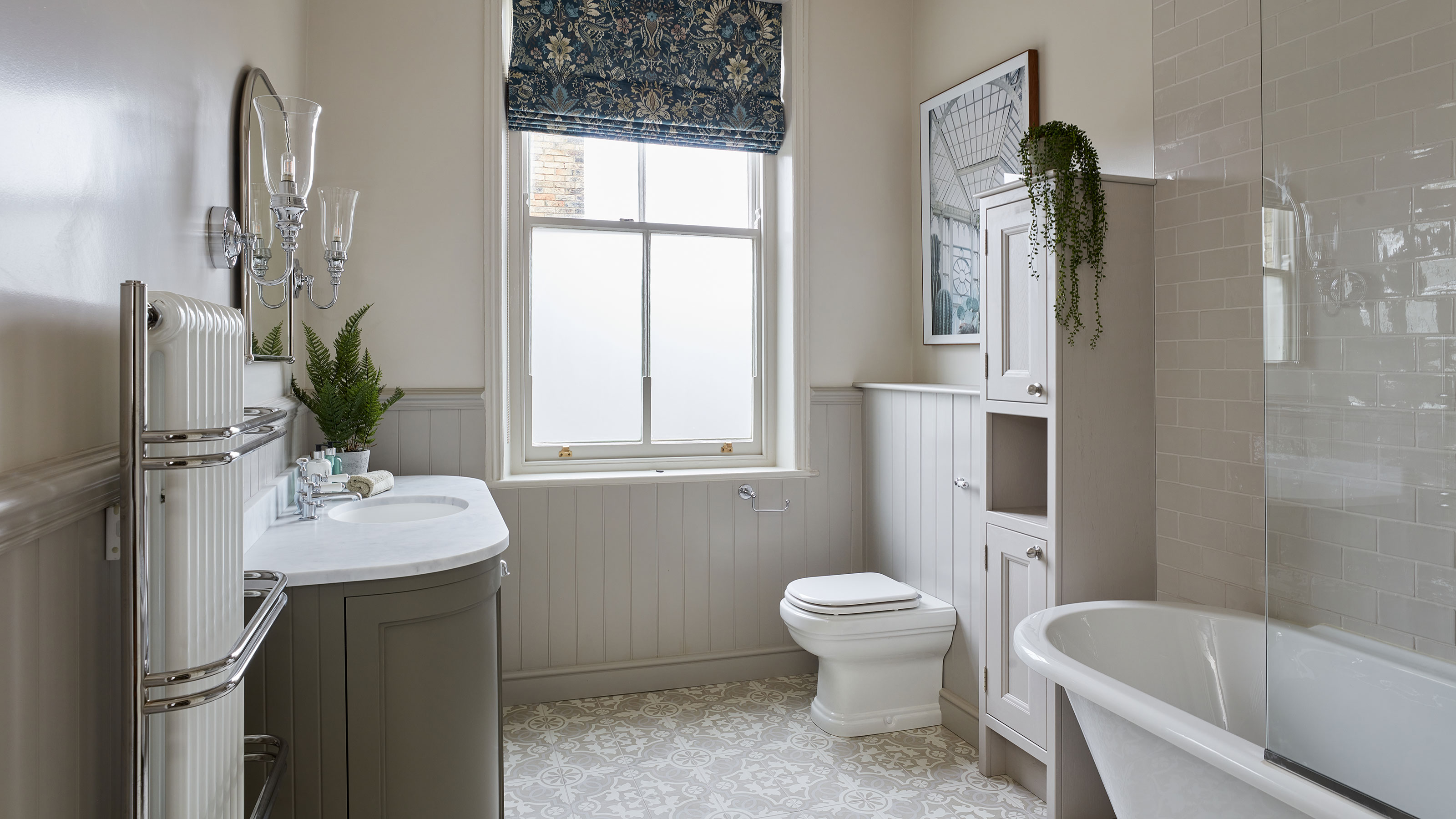
As the place we tend to head to in order to refresh, rejuvenate or relax in, our bathrooms need to provide a soothing solace within our homes. However, as one of the less public-facing rooms, they often get overlooked, meaning the bathroom can end up looking a little dated, tired and in dire need of sprucing up.
While it is certainly possible to spend a fortune renovating a bathroom, ripping it out entirely and starting again, this is not the only option. It is quite possible to overhaul a bathroom on a budget.
Here, we give you the top 10 ways to keep costs down when updating your bathroom, meaning you can enjoy bathing bliss without worrying about your bank account taking a battering.
How to make an old bathroom look new
There are many ways to approach bathroom design — some more costly and time-consuming than others.
While replacing the entire bathroom suite, laying a new floor, installing high-tech mood lighting and a walk-in shower enclosure complete with oversized shower head and numerous body jets (not forgetting the chromotherapy) might be the dream, for those looking to save their pennies, there are other ways to achieve a beautiful bathroom space that will cost far less.
According to Victoria Plum, the average cost of installing a new bathroom in the UK is £6,500 but it is, of course, possible to slash this figure — and we are here to show you how. From reusing what you have to tracking down the very best deals around, we explain how you can still have the bathroom you've been longing for without breaking the bank.
1. Don't play around with the layout
While it is understandable to consider shifting the layout around when carrying out a bathroom makeover, if you are looking to cut costs it is a better idea to leave the layout well alone. Changing the position of sanitaryware such as baths, sinks and, in particular, the toilet, can actually be one of the most expensive aspects of a bathroom renovation.
Bring your dream home to life with expert advice, how to guides and design inspiration. Sign up for our newsletter and get two free tickets to a Homebuilding & Renovating Show near you.
Moving the location of the toilet – and more specifically, the soil pipe – is a labour intensive, yet usually avoidable, job. If you can avoid repositioning it you will make considerable savings.
Mark down its current location on graph paper, along with the positions of any windows and doors and use this as the foundation of any layout design. Trial our different arrangements and assess where is best to position other key items of sanitaryware to limit your bathroom renovation cost.
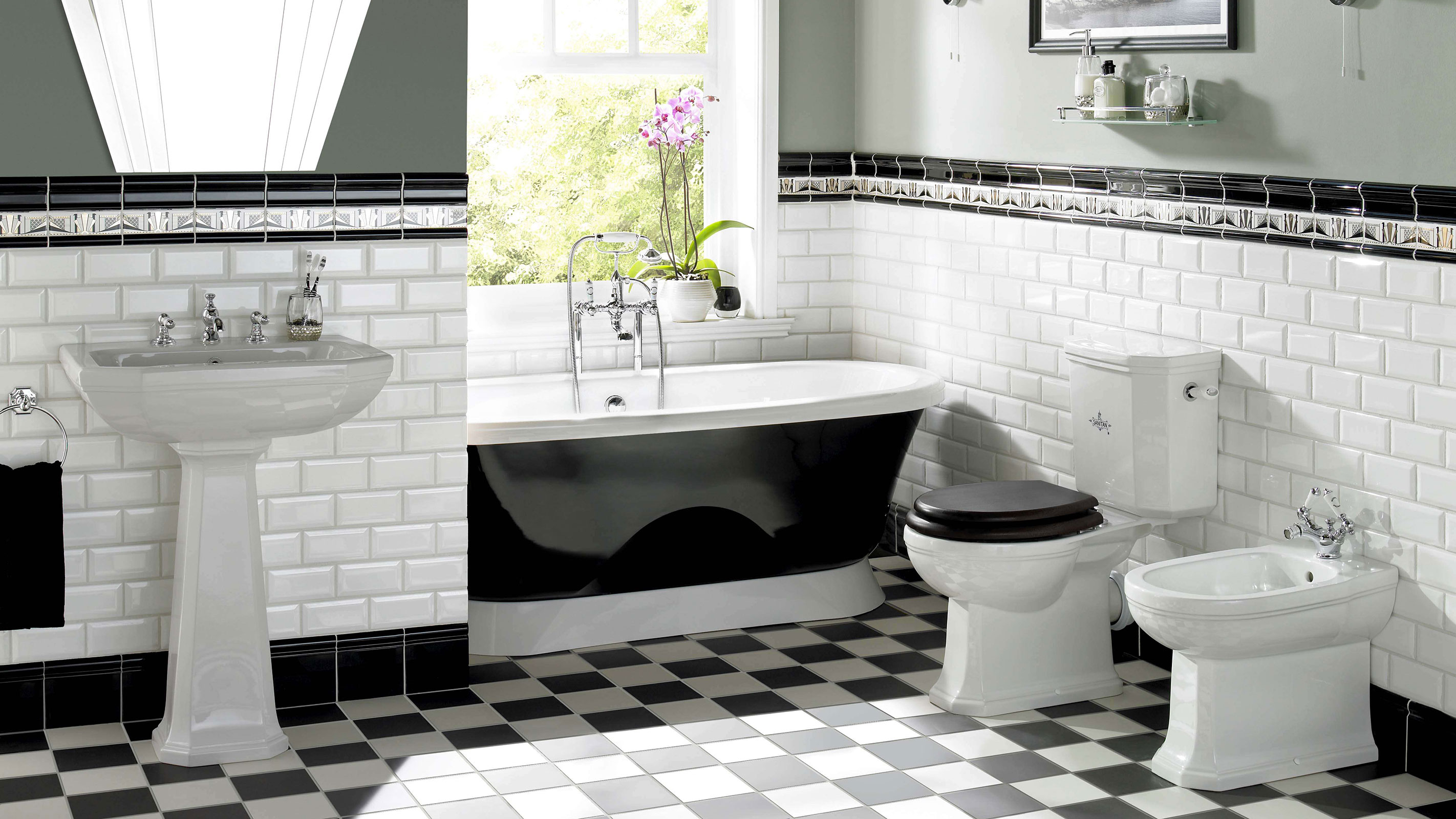
2. Plan well ahead
Good planning is key to keeping costs low in all kinds of home improvement projects — and bathroom makeovers are no exception.
While the majority of people know what they want in terms of styles and fittings fairly early on, it is amazing how many homeowners leave decisions on lighting and heating a bathroom until the last stages — and this can really bump up costs.
Planning lighting well in advance is really important and should be something that you already have figured out before tiling, plastering and so on. After this, it is really too late to change your mind without causing delays and disruption.
Heating is equally as important and a towel warmer is a cost-effective solution to creating a comfortable environment. Also consider long-term running costs vs initial savings when thinking about electric underfloor heating mats.
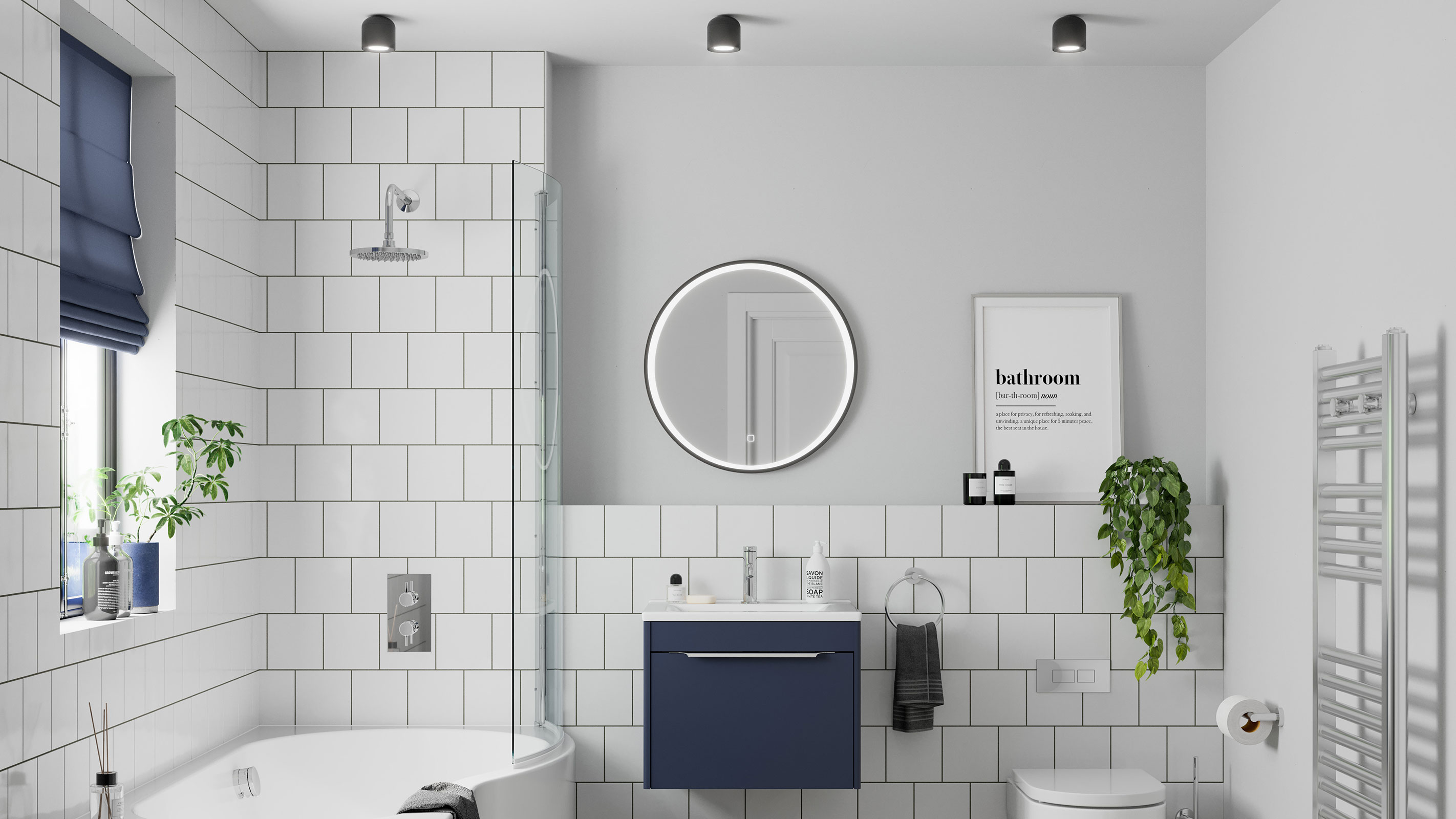
3. Spruce up your sanitaryware
Do take a moment to assess what you already have before heading out to splash out on a whole new bathroom suite to meet all your modern bathroom ideas. You might find that what you have can be transformed with a few easy (and cost-effective) tweaks.
Just as you can smarten up an old kitchen by swapping the existing handles or knobs on units for new ones, so too can you completely change the look of a bath or basin by changing dated or tarnished taps and waste fittings with new designs. You could also consider investing in a new shower head and controls — the effect this can have on the overall look of the space is often startling.
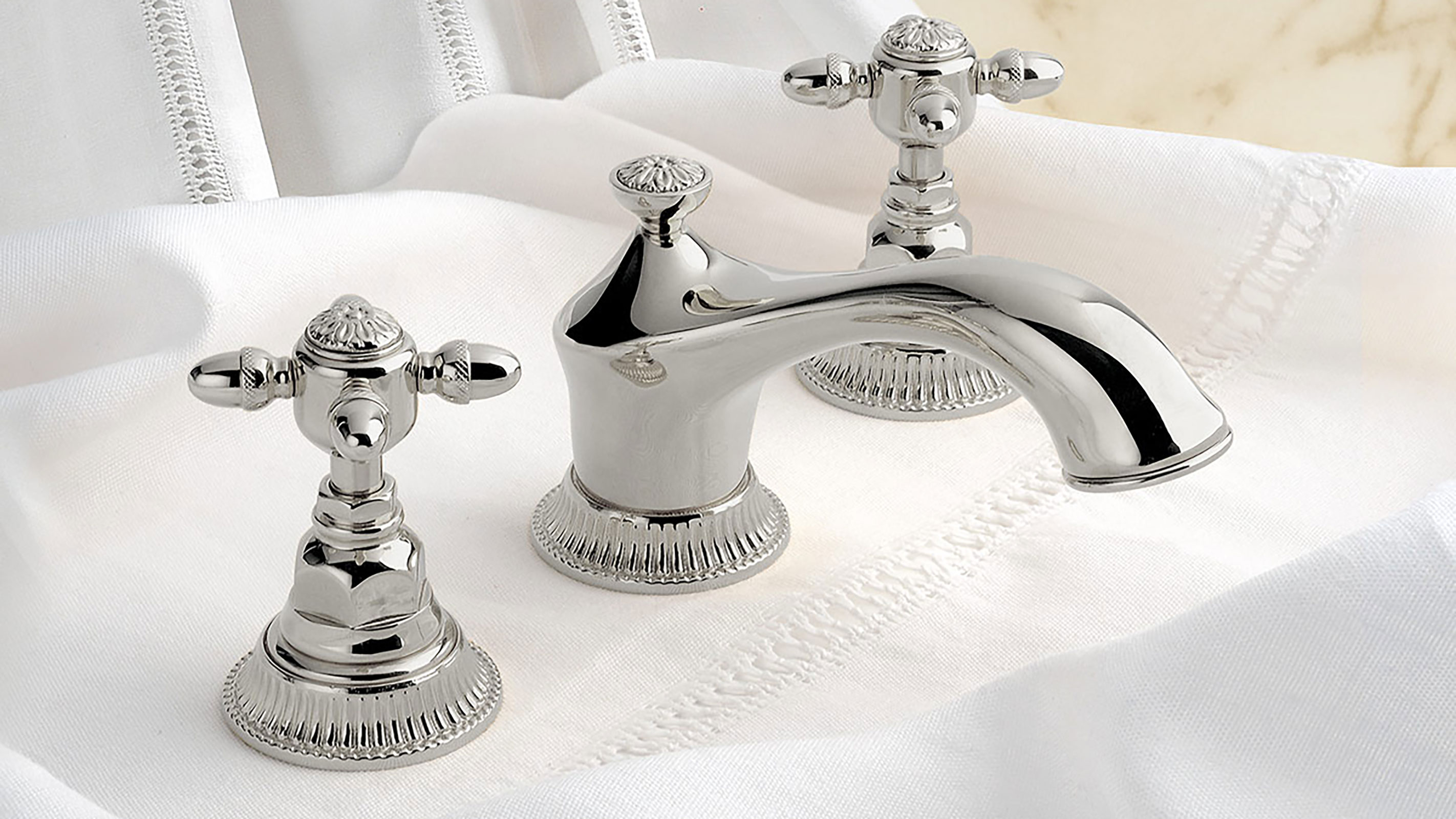
4. Change the decor scheme
Something well within the capabilities of most people is a decorating project and there are many easy updates you can carry out which will totally transform a tired bathroom.
At the cheapest end of the scale lies a quick repaint. Simply giving your walls a new lick of paint can have a massive effect on the look and feel of a room. And while you are at it, don't forget to do the ceiling and, if possible, any window frames in need of attention.
If you would like to take things a step further, you might consider brushing up on how to tile a wall. There is no need to spend a fortune on bathroom tile ideas. Plain ceramic wall tiles are usually the cheapest option and can be picked up for less than £10/m2 in some cases. Of course you will also need to factor in the cost of getting rid of existing tiles along with the price of adhesive and grout, as well as any tools you might need and tile spacers.
If your tiles are in good condition but looking a little worse for wear, simple re-grouting them could completely change their appearance.
Other quick ways to redecorate include swapping old-fashioned light shades or fittings for new versions, fitting bathroom wallpaper and adding new window treatments, such as Venetian blinds, in place of of tatty old versions.
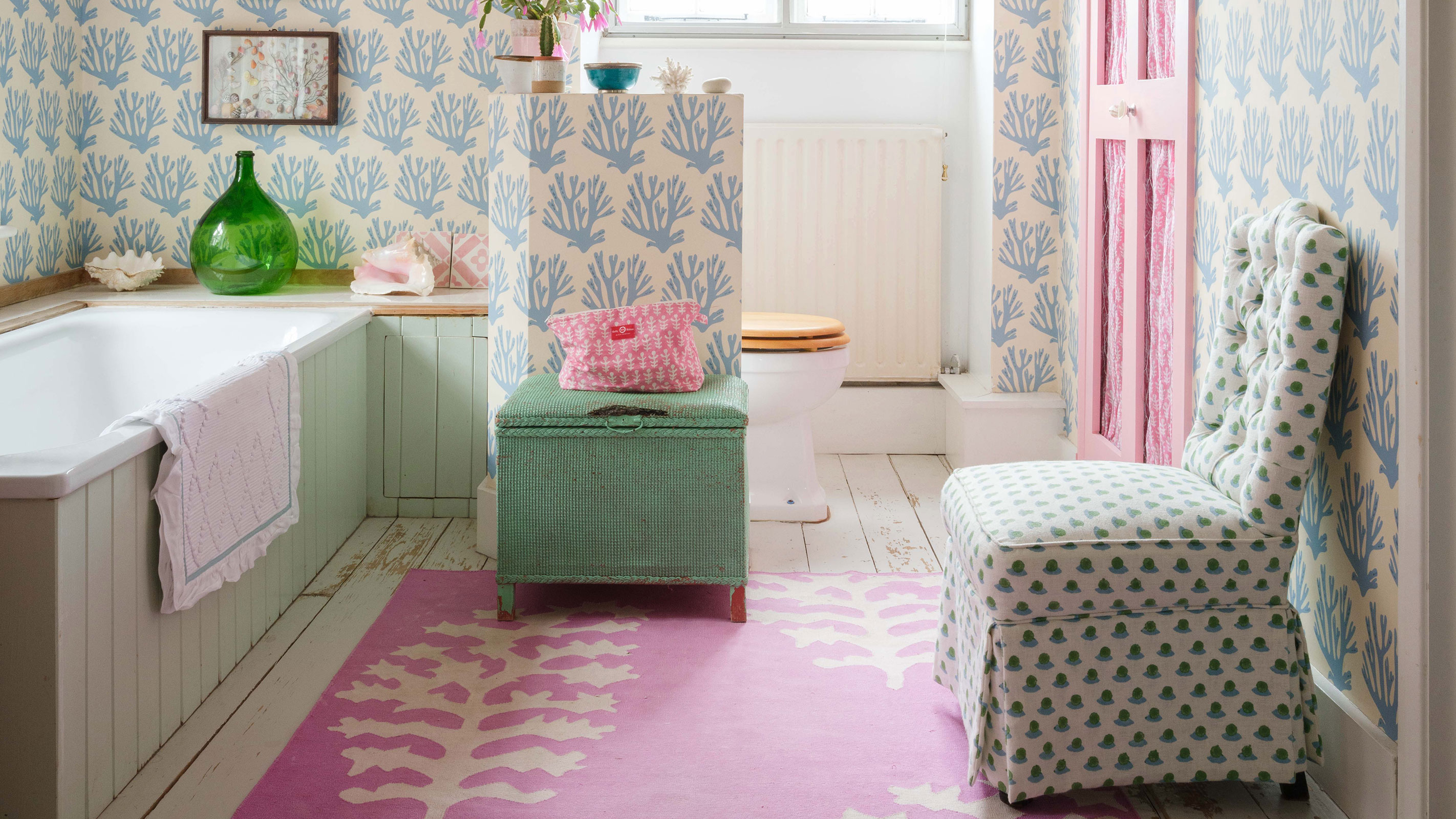
5. Snap up deals as and when you spot them
While there seems to be no shortage of signs declaring 'best prices ever' and so on hanging from bathroom showroom windows, not all bargains are created equal.
If, having done your research, you spot a deal on an item you love, don't wait to purchase it — get it before someone else does. If you wait until the moment you need a new bath/shower/tiles, it is likely that you will end up rushing the decision and either paying over the odds or settling for second best.
Certainly you might have to store the items you buy somewhere, but it is often worth stowing them away in a garage (your's or a friend's) or a storage facility — or just in another room, until you need them.
It is also well worth enquiring about ex-display suites in bathroom showrooms. They are often sold off with significant discounts.
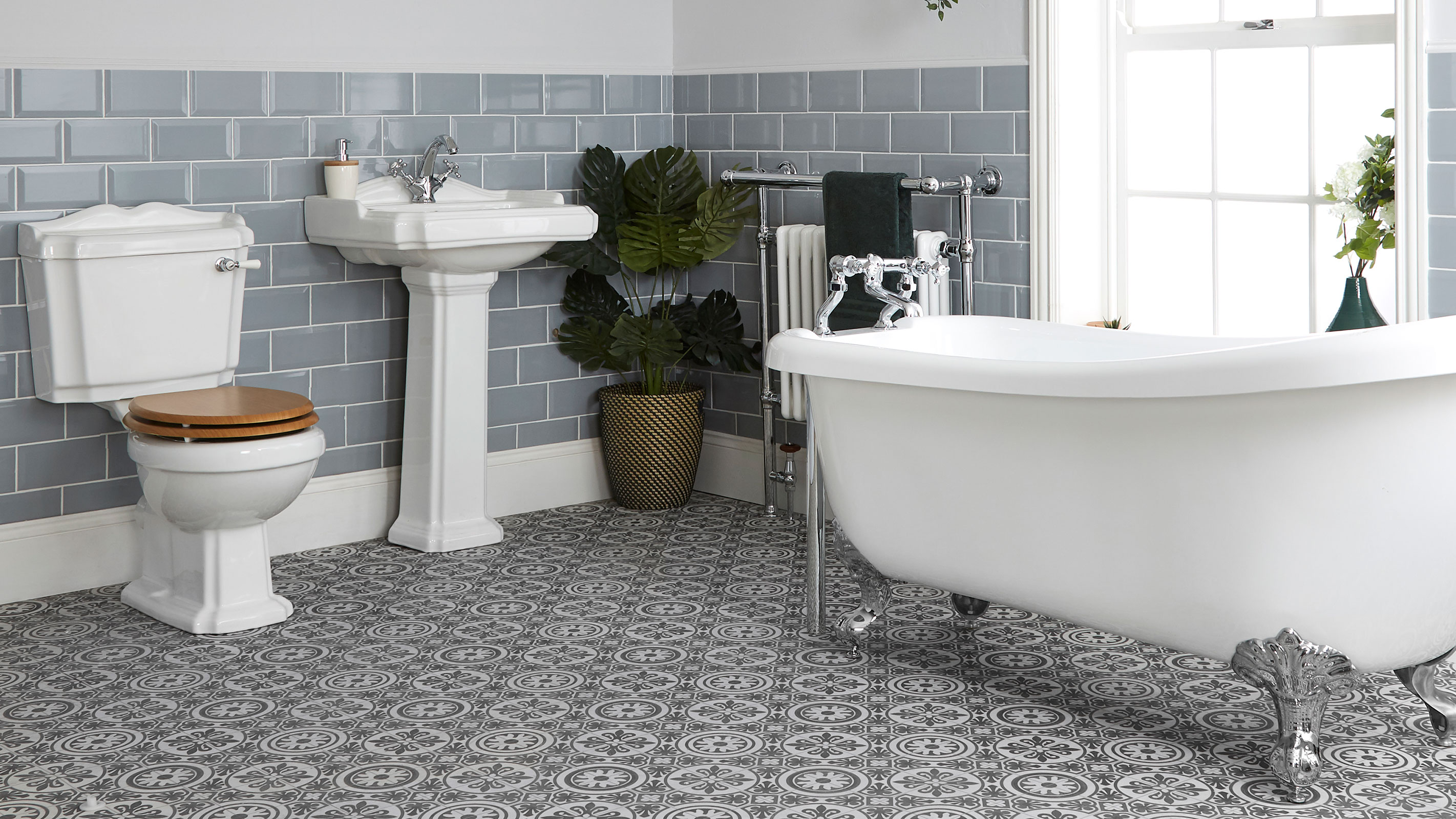
6. Tackle some of the installation yourself
You can really trim the cost of fitting a bathroom by taking on as much of the installation work yourself as you feel able.
While jobs such as tiling and even fitting sanitaryware are often carried out on a DIY basis, do bear in mind that it will usually be necessary to bring in an electrician when fitting a new bathroom — essential if you are adding a new circuit or installing a a power shower. Be sure to use a qualified electrician, who can self-certify their work.
According to The Home Owners Alliance, fitting your own bathroom could save you up to 60%.
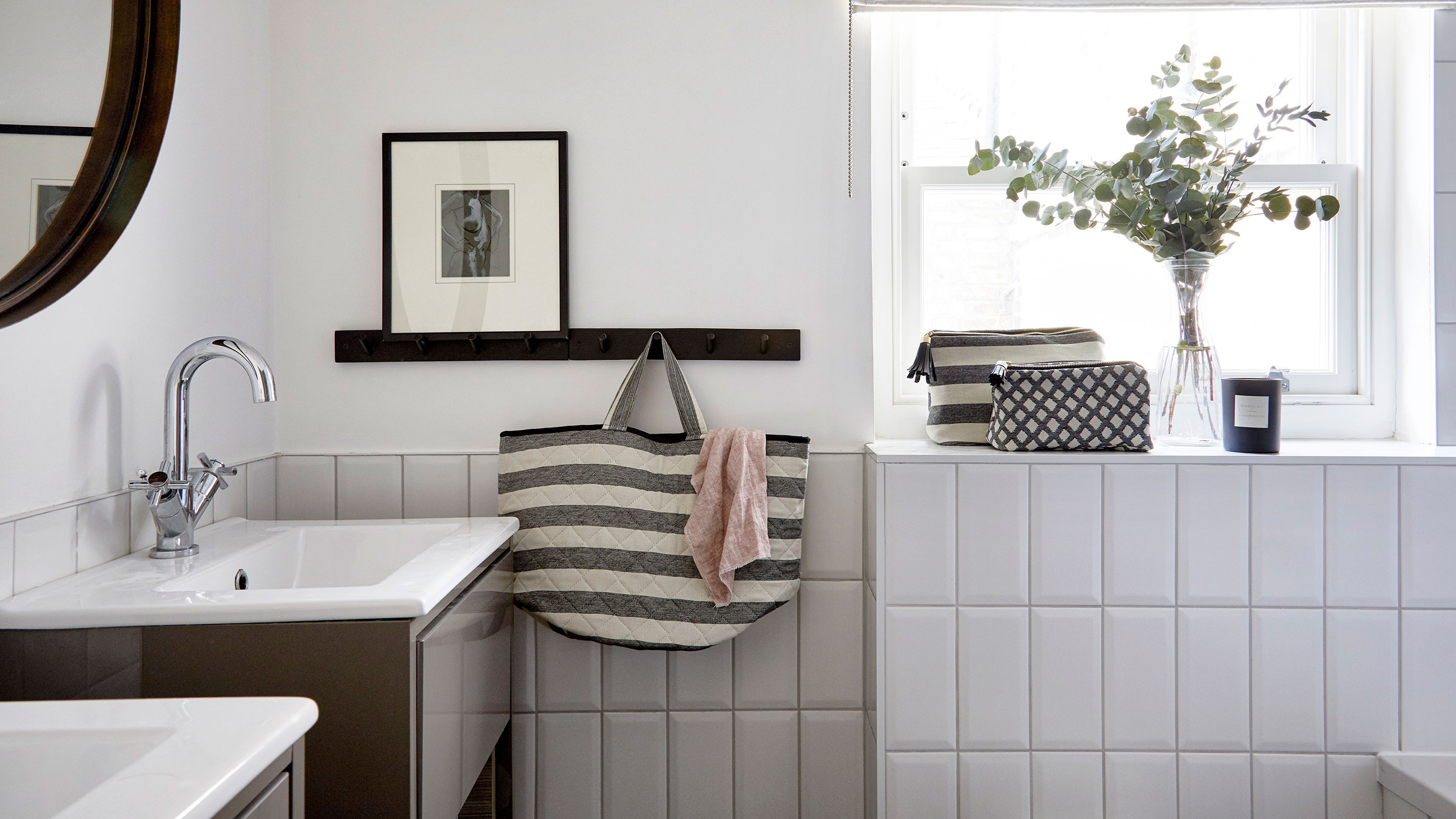
7 . Don't forget to factor in hidden costs
As with so many home projects, there are a number of hidden costs that often get overlooked when it comes to bathroom overhauls or renovation projects. Knowing what these are is crucial when designing a bathroom on a budget as you will be able to factor them into your overall spending plan so you won't risk overspending or running out of money halfway through the job.
Commonly forgotten bathroom costs include:
- Disposing of old sanitaryware, tiles etc.
- Waterproof backing board
- Tile adhesive and grout
- Silicone sealant
- New extractor fan
- Lighting
- Heat source
- Electrician, plumber, plasterer fees
- Paint and painting equipment
- Storage
- Floor reinforcement (sometimes necessary when installing new sanitaryware)
- Shower screen

8. Upgrade your bathroom lighting for less
There is no need to spend a fortune on upgrading your bathroom lighting ideas. In fact, there are several tricks to consider that will transform the way you feel about the space but won't cost the earth.
Sometimes, simply swapping an old, unflattering overhead light for a more modern design is all that is needed. Pay attention too to light colour temperatures — you'll want warm light if it is a calm, tranquil bathroom experience you are after.
It is also wise to look at fitting a light over or around your bathroom mirror — or investing in an illuminated bathroom mirror. Having more than one light source in the bathroom makes it possible to create different moods as and when required.
Do make sure that any bathroom lighting you opt for carries the correct IP rating for the area of the room you plan on fitting it in.
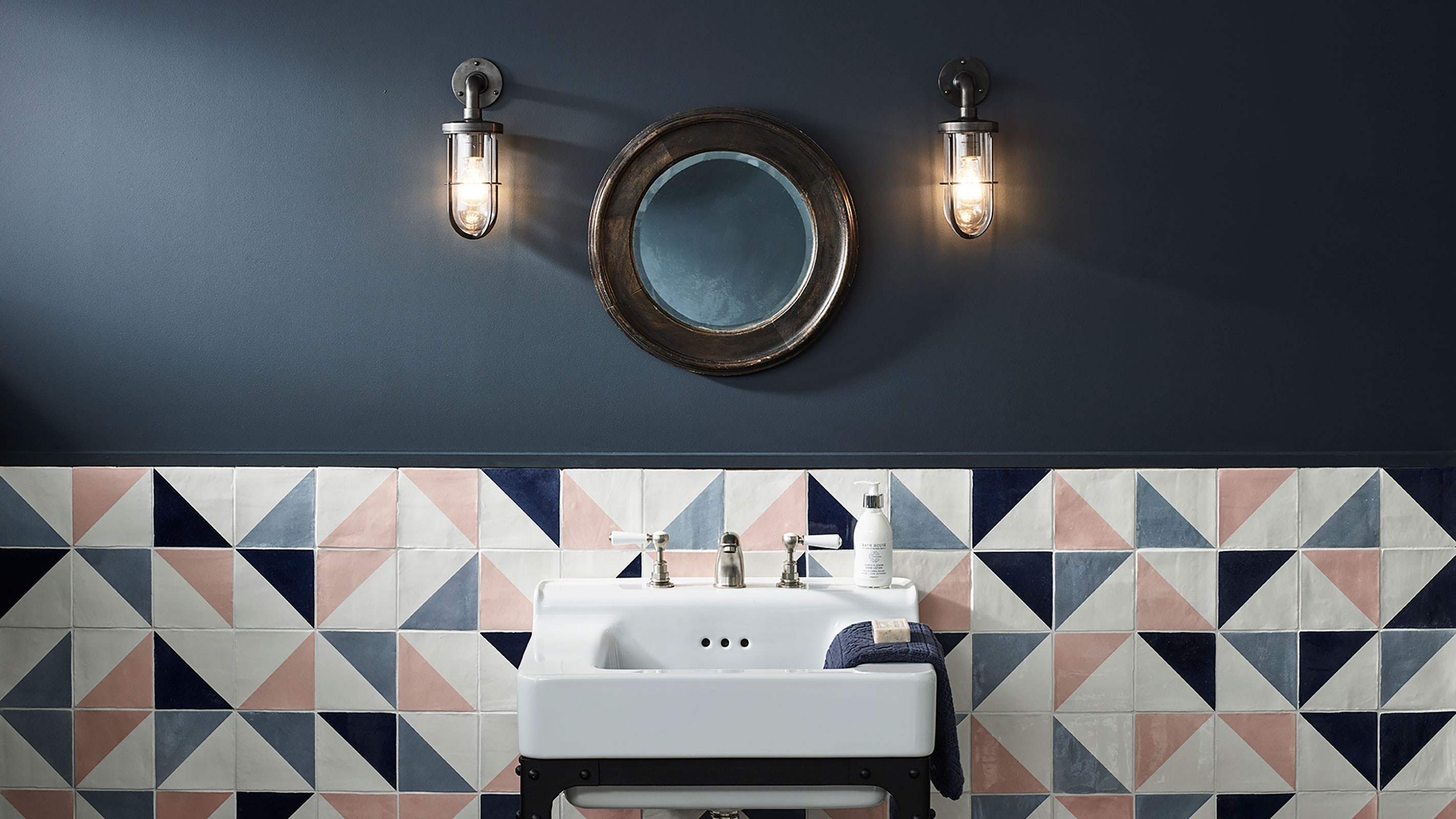
9. Consider fitting half wall panelling
Half wall panelling (also known as wainscotting) has long been popular in bathrooms. And the best news is that it is a very cost-effective, easy-to-install way to finish off walls too.
There are bathroom panelling ideas for every style of bathroom, including rustic coastal timber cladding and contemporary slatted wood in very pale or dark chocolately tones.
Fitting wall panelling in conjunction with using bathroom-friendly paint is a very budget-friendly way of finishing off walls — plus it means no pesky grout lines to keep clean. Another advantage is that half-panelling can result in a handy little shelf on which to place toiletries.

10. Ditch the shower curtain
Face it, rarely do shower curtains stand the test of time. Most discolour, fade and smell musty with frequent use which will do nothing for your bathroom decor or shower room ideas.
Either throw away your old shower curtain and invest in a new one that does justice to your stylish bathroom decoration scheme, or scrap the idea entirely and fit a sleek and sparkly shower screen instead.
If you still like the idea of a shower curtain, opt for one made from cotton. They are easier to wash and add a luxurious feel that can be lacking with plastic versions — but do buy a liner to go with it.
Simple glass shower screens cost around £70, are easy to clean and will outlive any curtain.
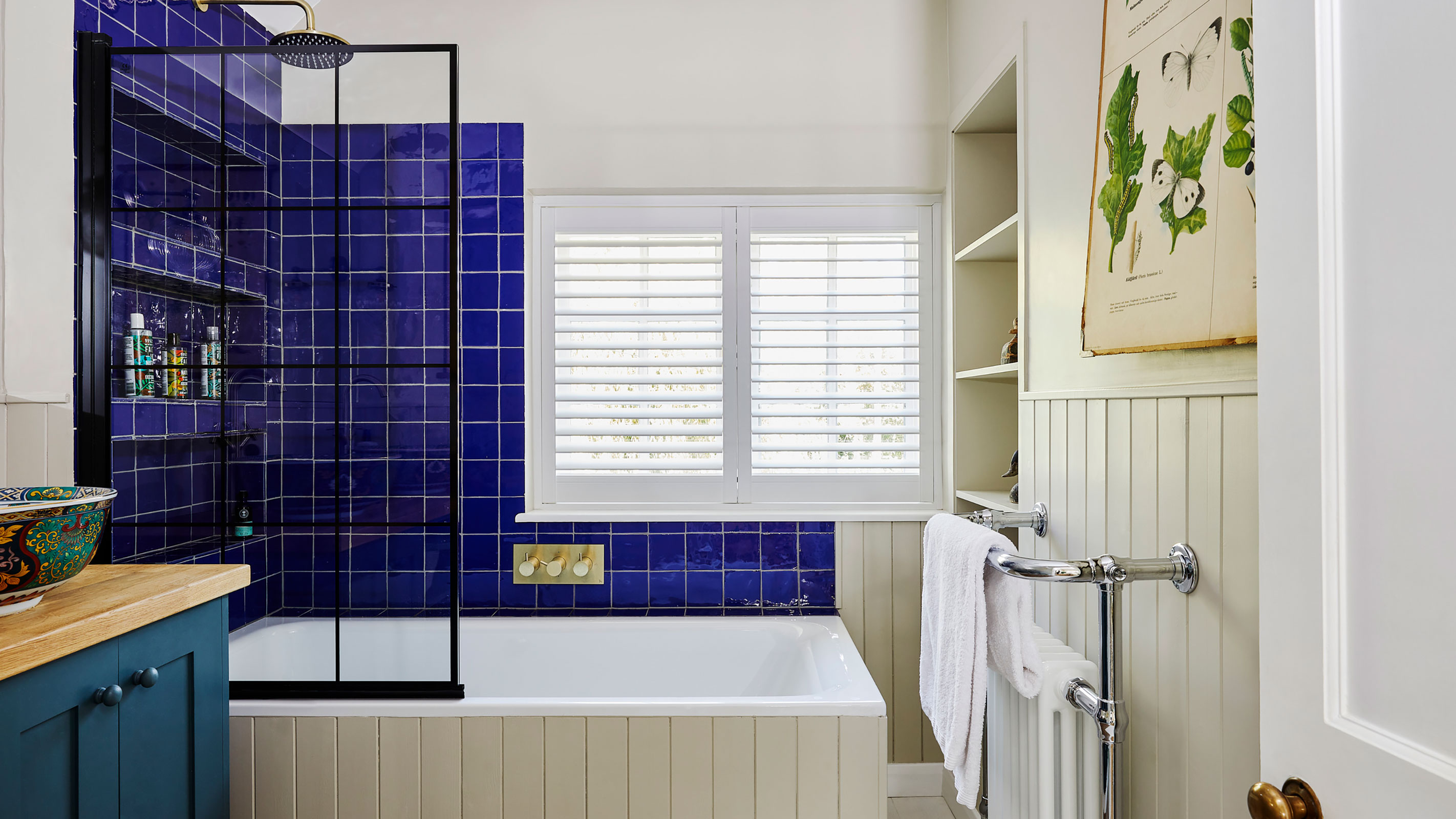
Natasha was Homebuilding & Renovating’s Associate Content Editor and was a member of the Homebuilding team for over two decades. In her role on Homebuilding & Renovating she imparted her knowledge on a wide range of renovation topics, from window condensation to renovating bathrooms, to removing walls and adding an extension. She continues to write for Homebuilding on these topics, and more. An experienced journalist and renovation expert, she also writes for a number of other homes titles, including Homes & Gardens and Ideal Homes. Over the years Natasha has renovated and carried out a side extension to a Victorian terrace. She is currently living in the rural Edwardian cottage she renovated and extended on a largely DIY basis, living on site for the duration of the project.

